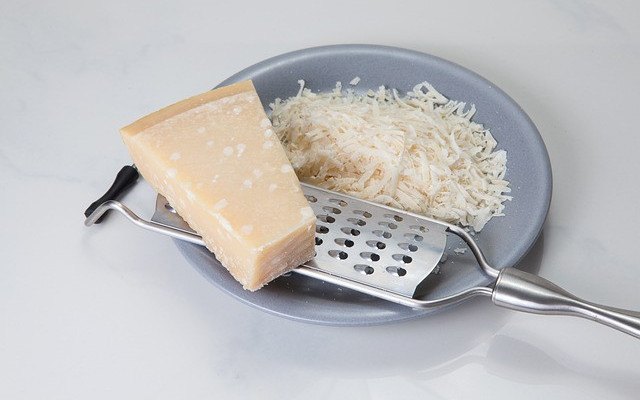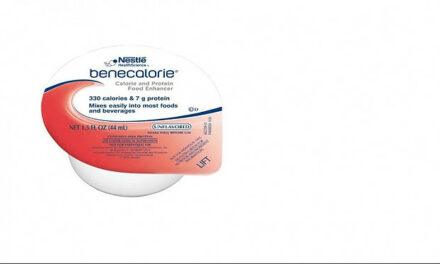Here we talk about Parmesan Cheese and Diabetes. Is Parmesan cheese good for diabetes? When is Parmesan cheese bad for diabetes? What are the Parmesan cheese eating tips? are some of the many questions we will address here.
Let’s start by defining cheese…
What is Cheese?
Cheese is a common and typical dairy product. It is produced from milk, good bacteria or rennet, salt and an enzyme.
The milk used in the production of cheese is obtained from cows, buffalos, sheep or goats.
Cheese is produced in varieties ranging from flavors, textures, milk coagulation. Majority of cheese produced melts at cooking temperature.
The first stage of cheese production is acidifying the milk. Afterwards, bacterial enzymes with similar activity are included into the milk casein to facilitate milk coagulation and milk curdling.
Once coagulation has occurred, the whey protein is left as a thin watery liquid and afterwards removed. To enable formation of more whey, salt is included, and the curds are placed in small pieces.
Whey is the liquid remaining after milk has been `curdled. Whey is drained off which leads to the appearance of clumps on the casein. The clumps formed are pressed into molds and allowed to dry for a certain period of time.
The appearance of cheese, smell and taste depend on different factors, which include:
- The animal whose milk was used in the manufacture
- The diet consumed by the animal
- Bacteria added to the casein
- The method used to manufacture the cheese
What is Parmesan Cheese?
Parmesan cheese, also known as Parmigiano Reggiano, is a hard Italian cheese made from cow’s milk and left to dry for at least one year.
During the production of Parmesan cheese, the whole milk gotten from the cow during milking in the morning is mixed with natural skimmed milk.
Usually, skimmed milk has all its fat removed, but in the production of Parmesan cheese the skimmed milk is produced by preserving the milk in low shallow tanks in order to allow the cream to separate from the whole milk of the cow.
Thermophilic lactic acid bacteria/whey is included, which leads to temperature increase. Then rennet is added for milk curdling.
Afterwards, it undergoes stages such as cutting, cooking, draining, knitting, pressing and the final stage salting after which the aging process begins.
The only substance added to Parmesan cheese in small amounts in order to effect the desired change is salt.
Parmesan cheese is an exquisite rich meal made from just three basic ingredients, which are raw unpasteurized cow’s milk, rennet and salt.
As mentioned earlier, the appearance of cheese depends on the animal that produced the milk used, food consumed by the animal, bacteria added to the casein and the manufacturing method.
Parmesan cheese has a fruity taste accompanied by a savory flavor, a gritty texture, nutty aroma due to the heterocyclic containing compounds such as alkylpyrazines .
Cows used for the manufacture of Parmesan cheese feed on only grass or hay. They do not give any growth hormones or steroids. Hence, the cows produce grass-fed milk. Only natural whey bacterial culture is allowed as a starter with calf rennet.
What is The Difference Between Cheese and Parmesan Cheese?
Cheese and Parmesan cheese have a sharp contrast ranging from origin to texture, color, taste, calories and even aging time.
- Cheese originates from England, while the latter originates from Italy.
- While cheese could be yellow to off white in colour, Parmesan cheese is straw- coloured.
- Cheese could be manufactured from milk produced by cow, buffalos, goats or sheep but Parmesan cheese is made from whole cow milk that is mixed with natural skimmed milk.
- Although both cheese and Parmesan cheese can provide calcium and iron, Parmesan cheese has less fat and cholesterol compared to cheese. Parmesan provides higher amounts of sodium, protein and calcium.
- Parmesan cheese is a very hard cheese made from unpasteurized raw cow’s milk.
- Parmesan cheese is made through a process called rennet coagulation, mixed with whey starter and left to age for a minimum of 12 months to about 40 months. The longer the aging process, the better.
- The Parmesan cheese that is left to age for a year is mild and has a less crumbly texture. On the other hand, cheese that is left to age for two years has a more grainy texture and has a more savory flavor. After three years, it gets a sharp, nutty and fruity flavor.
- Parmesan cheese has a high protein content, making it an appropriate and recommended addition to the diet of lactovegetarians.
Parmesan Cheese Nutrition Content
Parmesan cheese is nutritious. It is an energy-giving meal. A 28 gram serving of Parmesan cheese contains the following:
- Protein – 10 grams
- Fat – 7 grams
- Carbs – 0.9 grams
- Saturated fat – 5 grams
- Lactose – less than 1 mg
- Monounsaturated fat – 2.6 grams
- Calcium – 27% of the daily value
- Phosphorus – 16% of the daily value
- Sodium – 14% of the daily value
Parmesan Cheese Health Benefits
- Promotes Formation Of Strong Bones
Parmesan cheese contains calcium, protein and phosphorus, which are nutrients that aid the formation of strong bones.
Parmesan cheese contains the greatest amount of calcium which is 242mg per ounce or 19% of the daily value. Adults are advised to consume a minimum of 1000mg of calcium each day. So, in fact, Parmesan is the best dietary option for calcium.
The human body absorbs the calcium found in the dairy products such as cheese quickly compared to plant sources.
Consumption of cheese can eradicate osteoporosis, a disease condition where the bones become weak, fragile or brittle.
- Easily Digestible And Lactose-Free
Parmesan cheese contains large amounts of protein compared to other types of cheese.
It is protein-dense as a result of its aging process and its absence of moisture. It’s moisture content is just 30%.
It is also easily digestible. The reason behind this is that the lactic acid enzymes formed from fermentation break the casein products down into smaller proteins.
- Minimal Amounts Of Lactose Content
Having unpleasant digestive issues after consumption of lactose rich diets is prevalent across the world.
Lactose intolerance or milk intolerance is the inability of the body to break down the main carbohydrate in dairy products which is lactose. In this case, Parmesan cheese comes to the rescue because it contains minimal amounts of lactose.
Research has proven that persons who suffer from lactose intolerance should be comfortable with eating Parmesan cheese since it has easily digestible, high-quality protein.
Although in cases where there is serious intolerance to lactose or a casein allergy, it is safer to scrap dairy products from diet.
- Good Source Of Omega 3
Omega 3 is an essential fatty acid that the body cannot produce naturally but can only be obtained when consumed in a diet.
Compared to seafoods such as fish and oyster, Parmesan cheese contains a sparing but reasonable amount of omega 3.
Since the cows used for the production of Parmesan cheese grazed on just grass and hay only, Parmesan cheese provides a considerable amount of Omega 3. For 100g serving, Parmesan cheese contains 190mg of Omega 3.
Omega 3 has been proven to improve eye health, promotes healthy vision, higher intelligence or brain health, lower blood pressure, fight inflammation, autoimmune diseases and help in the prevention of cancer.
- Good Source Of Vitamin K2
Parmesan cheese possesses a good amount of menaquinone (vitamin k2).
Vitamin K2 is a fat-soluble vitamin. It keeps the elasticity of blood vessels intact. It acts as a coagulant by producing prothrombin, which plays an important role in blood clotting and promotes blood formation. Vitamin k2 also reduces the risk of cardiovascular disease and improves heart health. It also protects one against cancer. It protects the skin.
- Enhances Oral Health
Parmesan cheese helps in oral health, which is vital in the formation of healthy teeth and gums due to the presence of calcium and phosphorus. These nutrients protect adult teeth from diseases. Inadequate phosphorous leads to the breaking of teeth in kids and adults.
Eating cheese can prevent tooth decay.
Additionally, it maintains the PH in the mouth, leading to the cleansing of the saliva and eradicating harmful acids found in the mouth. Hence, there are fewer cavities in the teeth.
- Good Source Of Vitamin B12
Vitamin B12 is a vital water-soluble vitamin in the body. It does not self-generate but is gotten from meals and supplements.
A serving of Parmesan cheese contains 27% of the daily value. Vitamin B12 helps in the eradication of megaloblastic anemia and helps in the maintenance of body cells. It aids the formation of DNA and red blood cells.
Vitamin B12 deficiency includes weakness and fatigue. Lack of vitamin B12 limits the body’s ability to transport oxygen to body’s cells.
- Helps In The Prevention Of Strokes
Parmesan cheese contains phosphorus which is a nutrient that plays an important role in the neural activities of the body’s muscles and brains. It helps in easing muscle cramps and managing stress and anxiety.
Research suggests that consumption of cheese can reduce the risk of suffering a stroke by 10%.
Parmesan cheese is used as a condiment to improve the taste of food. It can be used to flavor or garnish healthy homemade meal. Its intrinsic nutty flavor with a dash of salt can fondle the taste buds and can be eaten as an appetizer or a dessert.
It can also be served on its own shredded or grated accompanied with fruits or eaten with Italian pasta. The list is endless due to how versatile Parmesan cheese is. It can also be added to soups for extra flavor. It can be accompanied by pumpkin risotto, pizza, eggs, fruits, nuts, bacon cream sauce, ozro and shrimps and salad.
An original Parmesan cheese possesses an official Parmigiano Reggiano branded rind, but the absence of a stamp indicates that it is an ‘imitation’.
Now let’s turn on to Parmesan cheese and diabetes…
What is Diabetes?
Diabetes is a disease condition in which blood sugar is very high. Insulin which is a hormone produced by the pancreas aids glucose enter the cells from food consumed to be utilized as energy. In the case of diabetes, the body doesn’t produce enough insulin or does not use the insulin produced by the pancreas properly. Hence, glucose just remains in the blood and does not get into the cells.
Having excess glucose in the blood eventually leads to health challenges.
There are different types of diabetes.
- Type 1 diabetes
In this type of diabetes, the body does not produce insulin. It is an autoimmune condition.
The immune system attacks and destroys the pancreas’ beta cells that produce insulin.
Type 1 diabetes can be diagnosed in anyone regardless of age but mostly in children and young adults. When this occurs, persons with type 1 diabetes have to regularly take in insulin.
- Type 2 diabetes
In this case, the body cannot utilize insulin properly. Hence, the pancreas makes too much insulin until it cannot eventually keep up. When insulin production decreases, this leads to high blood sugar.
Type 2 diabetes occurs commonly in over the age of 45 group largely as a result of the sedentary lifestyle of youth. There has been an increase in the diagnosis of type 2 diabetes amongst them.
- Gestational diabetes
This occurs in women while they are pregnant. In most cases, it goes away after the delivery of the baby.
Gestational diabetes is as a result of hormones that block insulin generated during pregnancy. However, if you’ve had gestational diabetes, there is a huge possibility of developing type 2 diabetes later in life.
Symptoms of diabetes include
- Frequent urination
- Drowsiness
- Blurry vision
- Slow-healing wounds
- Excessive thirst and hunger
Is Parmesan Cheese Good for Diabetes?
Diabetes has no cure, but balance and moderation is the key to managing diabetes and staying healthy. There is a variety of meals to choose from that is healthy and doesn’t increase blood sugar.
Cheese generally is high in fat and calories and may not be considered as an ideal meal for persons with diabetes. Therefore, it is a diet to keep in check as too much unsaturated fat can cause cholesterol levels to rise which increases the risk of cardiovascular disease.
It is safer to stick with reduced-fat cheeses. Parmesan cheese is naturally low in fat, making it a great option among cheese.
When choosing to consume cheese, factors to reflect on include calories, saturated fat and sodium levels. Parmesan cheese has a low Glycemic Index (GI) . This simply means that glucose is released slowly.
Although, it is important to note the portion size in order to manage saturated fat and sugar intake, the body is quickly able to digest the carbohydrates present in Parmesan cheese. Hence, it isn’t absorbed into the blood as quickly as other cheeses, which contain a high amount of carbohydrates.
Parmesan cheese usually contains little to no carbohydrate and appear very low on the GI . Parmesan cheese contains zero grams of carbohydrate per one-ounce serving.
Parmesan cheese, a low-fat cheese, can help keep blood sugar in check compared to other types of cheese. In fact, to reduce saturated fat intake, eating low-fat cheese like Parmesan is better to reduce the risk of developing cardiovascular disease.
Parmesan Cheese and Diabetes – What Does Research Say?
Consuming Parmesan cheese may reduce a person’s risk of developing type 2 diabetes.
A 2012 study found that consumption of about 55 grams which is equivalent to two slices of Parmesan cheese, could help reduce the risk by 12%.
Parmesan cheese contains butyrate, and experts suggest that butyrate could help the body use insulin properly and help in the management of blood sugar levels, thereby leading to a decrease in the risk of type 2 diabetes.
Parmesan is better accompanied with other healthy meal options for a diabetic and are mindful of portion sizes.
It is essential for persons with diabetes to control sodium intake as it can spike blood pressure which can cause cardiovascular-related illness, fluid retention, which can cause swelling in the foot that can eventually worsen diabetes.
People with diabetes ought to keep salt/sodium intake to the barest minimum. The American Diabetes Association advises people with diabetes to restrict sodium intake to 2300mg each day.
There is link between diabetes and heart disease. Adults with diabetes have a higher possibility to die from heart disease when compared with adults without heart disease.
Parmesan cheese is very high in sodium. An ounce of Parmesan cheese contains 433mg of sodium. Hence, it is not a safe choice if one is on a restricted sodium diet.
Regardless of the fact that Parmesan cheese has many health benefits, when consumed regularly in big portions, it can lead to weight gain, which increases the risk of heart disease and stroke.
Weight gain is a typical symptom of diabetes. There is a very high possibility for young adults who have type 1 diabetes to have excess body weight or be obese. Being overweight with diabetes makes it even more difficult to control blood sugar levels.
Alternate Cheese Snack Ideas For Diabetics
Parmesan is protein-dense and has a slightly lower calorie content which is suitable. However, there are a few other alternative cheese snack ideas that are suitable for persons with diabetes.
Examples are:
Fermented cheese such as cottage cheese, ricotta, cheddar that contains probiotics.
- Cottage cheese
Cheese that has a lower aging process and are soft tend to have a low sodium content and cottage cheeses falls under this category.
It is also believed to help in maintaining blood pressure and reduce the risk of cancers such as prostate cancer. It aids weight loss and management. It promotes gut health.
- Ricotta
Ricotta is low in sodium which makes it suitable for diabetics. It is also rich in phosphorous, zinc, vitamin A and Vitamin B12, iodine.
It is low in fat and contains leucine in large amounts, which is vital for muscle health and aids the synthesis of protein and breakdown.
- Cheddar
This is the most common cheese in the UK and the second most common cheese in the US after mozzarella. It is a hard cheese, off white in color which is produced from cow’s milk.
It helps in promoting blood clotting, wound healing and maintaining normal blood pressure. It is rich in protein, calcium, vitamin k. It can be sliced into sandwiches and grated into soups.
(Probiotics are good bacteria that help to prevent one’s health from deteriorating. It reduces the risk of cardiovascular disease and defends the body against yeast infections that persons with diabetes are susceptible to.)
- Grana Padano
This cheese is also lactose-free regardless of the fact that it contains milk nutrients.
It is soft and very nutritious cheese, low in calories and fat. It reduces blood pressure, thereby aiding hypertension and helps in the relaxation of blood vessels.
Research shows that it can lower blood pressure by 8/7 mmHg.
- Asiago cheese
Consumption of this cheese may help in managing high blood pressure, hypoparathyriodism, premenstrual syndrome symptoms, stroke, colon cancer, strengthens bones and helps prevent osteoporosis.
Asiago cheese is best enjoyed when grated and included in other dishes.
- Romano cheese
This cheese has a higher moisture content compared to Parmesan. It can be purchased in both fresh and dehydrated form. It is formed from sheep’s milk.
Research suggests that it can be connected to lower Body Mass Index, risks of diabetes, cancer and inflammation.
- Feta cheese
Compared to other cheeses, feta cheese has the highest amount of calcium.
It is made from sheep or goat’s milk and possesses few calories, which makes it suitable for weight management.
- Mozzarella
This is the safest option for persons with diabetes. It has low sodium content. It is rich in zinc, vitamin B2(riboflavin), vitamin B7(biotin), potassium.
Consumption of mozzarella cheese helps to increase the amount of white blood cells in the body. White blood cells are cells that defend and protect the body against infection.
Mozzarella cheese can also boost immunity; reduce blood sugar levels for those with diabetes, lower blood pressure.
- Low sodium cottage cheeses
It is very nutritious and packed with protein, selenium, calcium and phosphorus. This particular cheese is characterized by its soft, creamy and white appearance, is majorly consumed by athletes and is usually incorporated in weight loss plans. It has relatively few calories.
- Emmental
This cheese helps with inflammation and improves immunity. It contains phosphorus, vitamin B12, calcium, copper, vitamin A, zinc. It is really beneficial for bones, arteries, muscles, cells, vision, immune system, mental health and helps with fatigue and tiredness.
Conclusion
Parmesan cheese is a hard fruity cheese made from 4 basic ingredients: milk, salt, rennet, and bacteria culture and left to dry for a very long time.
It has a lot of health benefits because of the nutrients it contains, such as calcium, sodium, phosphorus, potassium, magnesium, vitamin A.
It helps to combat osteoporosis, maintain healthy blood pressure, and it is also a recommended addition to the diet of diabetics patient, but it is advised to consume in moderation due to its high sodium content.




















